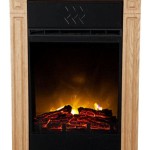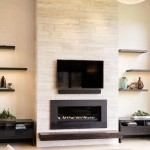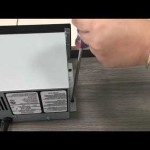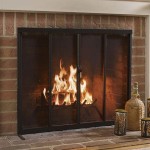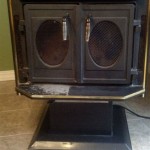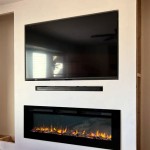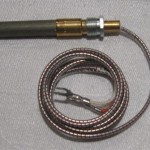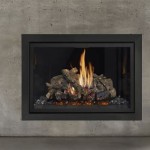Best Wood Burning Fireplace Inserts: A Comprehensive Guide
Wood burning fireplace inserts offer an efficient and aesthetically pleasing solution for heating homes. These inserts are designed to fit into existing masonry fireplaces, transforming them from often inefficient and drafty features into powerful and controllable heat sources. Selecting the right wood burning fireplace insert requires careful consideration of several factors, including heating capacity, efficiency, safety features, and aesthetic appeal.
This article provides a comprehensive guide to understanding the key aspects of wood burning fireplace inserts, helping potential buyers make informed decisions and choose the best option for their individual needs and home heating requirements. The information provided focuses on technical specifications, safety standards, and user-friendly features that contribute to optimal performance and a positive user experience. This guide aims to equip homeowners with the necessary knowledge to navigate the market and select an insert that will provide reliable and efficient heating for years to come.
Determining the Appropriate Size and Heating Capacity
One of the foremost considerations when selecting a wood burning fireplace insert is determining the appropriate size and heating capacity for the space it will be heating. Overestimating or underestimating the required BTUs (British Thermal Units) can lead to inefficiencies, discomfort, and potentially even safety issues. The size of the area to be heated, the insulation levels of the home, the climate zone, and the number of windows and doors all play a significant role in determining the necessary BTU output of the insert.
A general rule of thumb is that approximately 30 to 50 BTUs are needed to heat one square foot of living space, but this can vary depending on the factors mentioned above. For example, a poorly insulated home in a colder climate will require a higher BTU rating than a well-insulated home in a milder climate. Manufacturers typically provide BTU ratings for their inserts, along with recommended heating area ranges. It's advisable to consult with a professional HVAC technician or fireplace installer to accurately assess the heating requirements of the home and ensure proper insert sizing.
Furthermore, it is important to verify the dimensions of the existing fireplace opening to ensure the chosen insert will fit properly. Precise measurements of the width, height, and depth are crucial. Inserts are designed to be installed with a certain clearance from combustible materials, so these measurements must be taken into account to ensure safe operation. Many manufacturers offer inserts in various sizes to accommodate different fireplace dimensions. Utilizing online resources and product specifications sheets provides valuable insights for this step.
Evaluating Efficiency and Emissions Standards
The efficiency of a wood burning fireplace insert is a critical factor in determining its cost-effectiveness and environmental impact. High-efficiency inserts burn wood more completely, extracting more heat from each log and reducing the amount of smoke and pollutants released into the atmosphere. The United States Environmental Protection Agency (EPA) regulates the emissions standards for wood burning appliances, aiming to reduce air pollution and improve air quality.
EPA-certified inserts are designed to meet stringent emission limits, typically measured in grams per hour (g/hr) of particulate matter. Inserts with lower emission rates are generally considered more environmentally friendly and more efficient. When comparing models, pay close attention to the EPA certification and emission rating. Opting for an insert with a lower emission rate and higher efficiency rating not only benefits the environment but also often results in lower fuel costs over the long term.
The efficiency rating of a wood burning fireplace insert indicates the percentage of the wood's energy that is converted into usable heat. Higher efficiency ratings translate to less wood required to achieve the desired heating output. Look for inserts with efficiency ratings of 75% or higher for optimal performance. Some manufacturers also provide an annual fuel utilization efficiency (AFUE) rating, which takes into account both the steady-state efficiency and losses incurred during start-up and cool-down cycles. Comparing AFUE ratings can provide a more comprehensive understanding of the insert's overall efficiency.
Assessing Safety Features and Operational Considerations
Safety is paramount when operating any wood burning appliance. Wood burning fireplace inserts incorporate various safety features to protect homeowners and prevent accidents. These features may include a sealed firebox, a door latching mechanism, a blower fan with overheat protection, and a chimney liner specifically designed for use with wood burning appliances. A sealed firebox prevents smoke and carbon monoxide from entering the home, while a secure door latch helps prevent accidental spills of embers or ash.
A professionally installed stainless steel chimney liner is essential for safe and efficient operation. The liner protects the existing masonry chimney from the corrosive effects of wood smoke and helps to ensure proper draft. It is crucial to have the chimney inspected and cleaned regularly by a qualified technician to prevent creosote buildup, which can pose a fire hazard. Regular maintenance, including ash removal and inspections of the door seals and blower fan, is also important for maintaining the insert's performance and safety.
Beyond safety, consider operational factors such as ease of use, maintenance requirements, and available features. Look for inserts with user-friendly controls, a large viewing window for enjoying the fire, and a convenient ash disposal system. Some inserts offer features such as automatic air control, which regulates the air supply to the fire for optimal combustion, and thermostatic control, which allows the user to maintain a consistent temperature in the room. Additionally, consider the availability of replacement parts and the manufacturer's warranty policy. A solid warranty provides peace of mind and protects against potential defects or malfunctions.

The Best Wood Burning Fireplace Inserts Or Stoves Ecohome

Quadra Fire Expedition Ii Wood Insert Best

Comparing Fireplace Inserts What S Best For You Forge Flame

The Best Wood Burning Fireplace Inserts Or Stoves Ecohome

Wood Burning Fireplace Inserts Insert Installation

Fireplace Inserts Gas Wood Pellet Electric Best Fire Hearth Patio

The Best Wood Fireplaces Of 2024 Direct Learning Center

A Step By Guide To Understanding Fireplace Inserts

Best Fireplace Inserts Of November 2024 Forbes Home

What S Best A Fireplace Stove Or Insert We Love Fire

